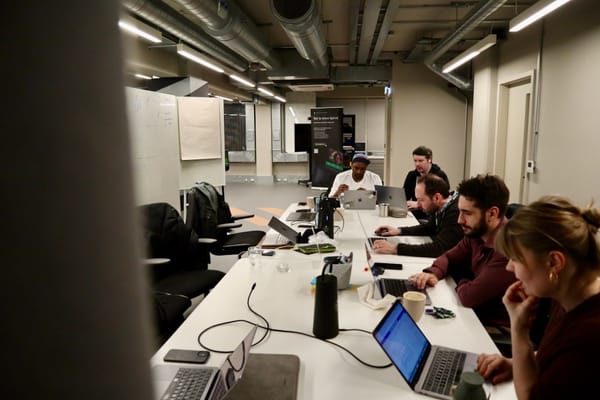
Newsletter
AI isn’t failing, organisations are #22
Strategy only matters if it flows into execution. This is a simple, practical example of how product teams can connect long-term bets to real customer impact.

Newsletter
Strategy only matters if it flows into execution. This is a simple, practical example of how product teams can connect long-term bets to real customer impact.

Newsletter
AI isn’t just changing tools. It’s reshaping systems. Growth, design and product work are all being rewritten at the same time, and the teams that adapt best will be the ones who understand that shift early.

Newsletter
From strategy to design to agency delivery, the models that once defined how we work are being rebuilt. The teams that win next will be the ones who rethink their operating system, not just their outputs.

Newsletter
Legacy models are cracking everywhere , from agency economics to product architecture. The teams who win next aren’t the ones moving faster, but the ones stripping away everything that slows them down

Product
Most teams still run Agile ceremonies while shipping slows to a crawl. But the products moving fastest today are built by tiny, post-agile teams who skip the process theatre and go straight to evidence.

Product
Lift and Shift: When It’s the right move, and when it’s a trap.

Newsletter
This week’s issue explores the rise of vibe coding in major tech, why UX still struggles to influence business, how PM and project roles keep getting mixed and why teams deliver only 3% of their plans.

Growth isn’t a hack - it’s the outcome of a great product. The fastest-growing companies don’t chase tactics; they obsess over delivering value fast. When your product makes customers successful, growth takes care of itself.

Most MVPs fail not because of bad ideas, but because they try to do too much. An MVP isn’t a smaller version of your product - it’s an experiment designed to prove your riskiest assumptions. The key to prioritisation isn’t deciding what to build, it’s having the discipline to say “not yet.”

This week: why taste is your most underrated edge, what GPT-5 means for you, and my new framework for going from idea to launch in weeks.

As Elena Verna said at #ProductCon, your brand can be your moat. Not just a marketing tool, but a true product differentiator. Here’s why brand is becoming a product exercise — and how to use it as a growth lever.
Every few weeks I share lessons from The Build Loop - frameworks, field notes and insights on design, strategy and adaptive business.

Most teams ship only 3% of their three-year roadmap, not because they’re bad, but because the planning model itself is broken.

This week’s issue explores why product teams jump to solutions too early, the rise of AI prototyping tools like Lovable, and how the next wave of innovation might come from those who design less and learn faster.

Expanding what product managers do, one tech-enablement at a time.

Don't make your MVP an all-you-can-eat.

Most briefs begin with a solution. A new website, a new feature, a new campaign. It feels decisive, but it’s often a trap. Solution bias is when we define the problem in terms of a particular fix, jumping to how before understanding why. The result? Great execution on the wrong thing.

There’s always a moment where a project feels like it’s stalling. Seth Godin calls this The Dip: “the long slog between starting and mastery.” Instead of panicking, tighten scope and shorten the loop. Momentum shouldn’t be defined by weekly meetings — it should be defined by evidence.

Most companies don’t need more designers - they need a better method. The Build Loop is a framework for getting 10x results from the same team by turning ideas into live, validated products at speed. It’s not about adding headcount. It’s about building smarter.

Growth isn’t a hack - it’s the outcome of a great product. The fastest-growing companies don’t chase tactics; they obsess over delivering value fast. When your product makes customers successful, growth takes care of itself.

Product work is evolving from coordination to creation. The leaders who stay relevant will be the ones who blend strategy, systems thinking, and AI fluency into how they work every day.

Enterprise teams can’t afford to just ‘modernise’ anymore. They need to reimagine how they work. From Disney’s conversational design systems to OpenAI’s new AI browser and Monzo’s frictionless UX, the future belongs to those who adapt fast.

AI is rewriting how we design and build. But the teams that stand out aren’t just faster - they’re clearer. This edition explores Intercom’s new AI-driven design model, how PMs are building “second brains,” and why your brand might just need a rethink before your next campaign.

This week I’ve been writing about AI and money. Stripe and OpenAI now let ChatGPT shop for you, but the incentives are misaligned. The second your AI agent starts pushing sponsored products, trust is gone. Before we even trust AI to write emails, should we really be giving it our credit cards?